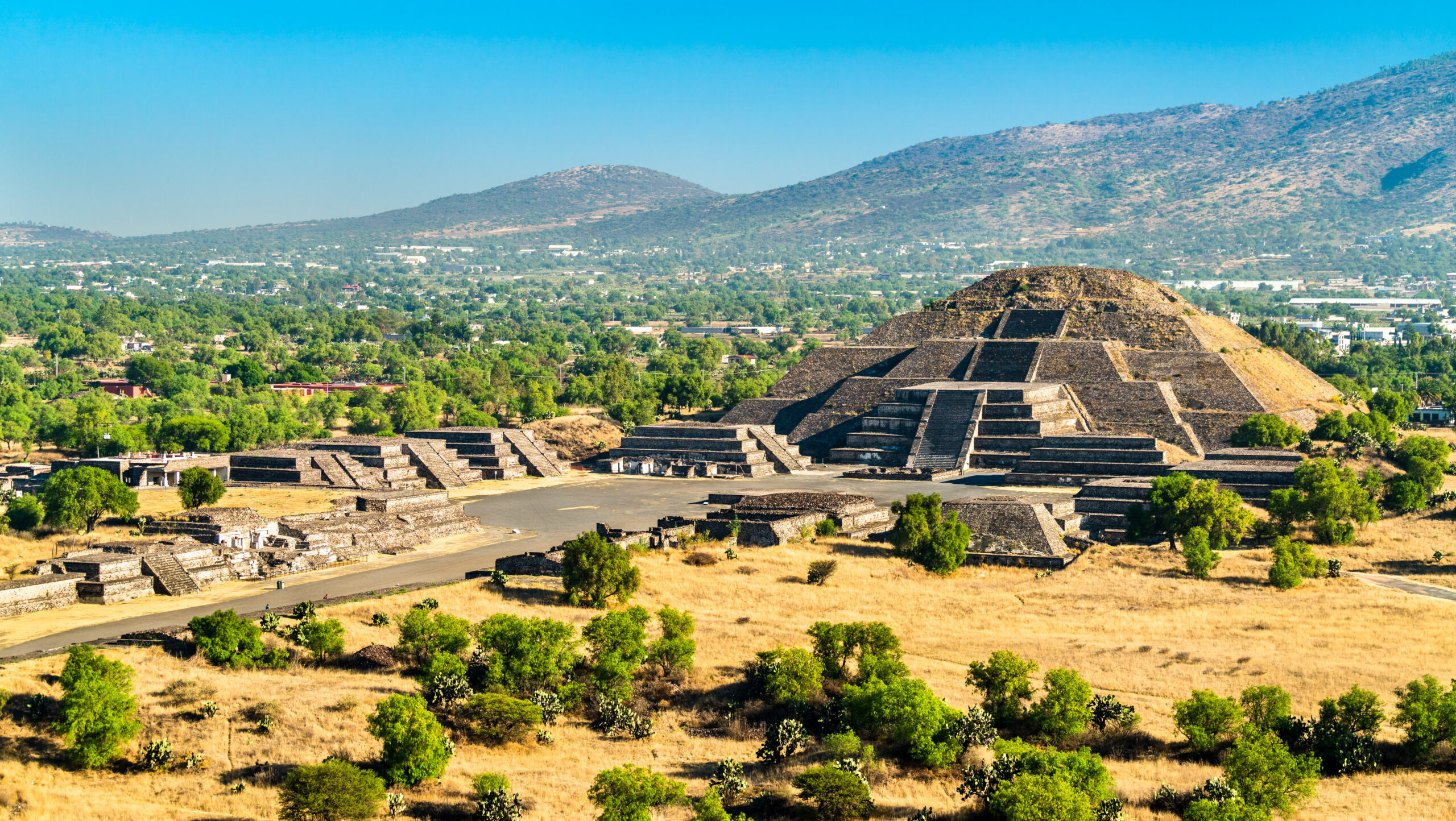Hurricanes are some of the most powerful and awe-inspiring natural phenomena on Earth, with their size and intensity often leaving a lasting impact on the regions they touch. These massive storms can span hundreds of miles, bringing destructive winds, torrential rains, and devastating storm surges. While many hurricanes are remembered for their strength, the sheer size of some makes them especially noteworthy. Larger hurricanes can affect vast areas, causing widespread damage and disruptions that stretch far beyond their immediate path. Exploring the largest hurricanes ever recorded offers a glimpse into the incredible scale of these storms and the challenges they present to those in their way.
Typhoon Tip (1979)

Typhoon Tip holds the record as the largest hurricane ever recorded, with an astonishing diameter of 1,380 miles. This enormous storm formed in the western Pacific Ocean and wreaked havoc across multiple regions. At its peak, Tip’s wind speeds reached 190 mph, placing it as one of the most intense typhoons as well. The storm caused severe flooding and landslides, displacing tens of thousands of people in Japan. Typhoon Tip’s central pressure dropped to an extraordinary 870 millibars, a record for any tropical cyclone. This powerful system caused over 100 fatalities and widespread destruction despite weakening before landfall. Tip remains a benchmark for meteorologists studying the limits of cyclonic power.
Hurricane Sandy (2012)

Nicknamed “Superstorm Sandy,” this hurricane stretched 1,150 miles across at its peak, making it one of the largest Atlantic hurricanes. Sandy’s immense size allowed it to affect 24 states, including the entire eastern seaboard of the United States. Although it reached only Category 3 intensity, its storm surge caused catastrophic flooding in New York and New Jersey. Wind speeds topped out at 115 mph, and the system caused damages estimated at $65 billion. Sandy’s interaction with other weather systems amplified its effects, creating a hybrid storm system. The storm claimed over 230 lives in eight countries. Its enormous size and far-reaching impact made it one of the most infamous hurricanes of the 21st century.
Hurricane Katrina (2005)

Hurricane Katrina’s diameter spanned 400 miles, smaller than some hurricanes, but its devastating effects made it unforgettable. Reaching a peak intensity as a Category 5 hurricane, its winds surged to 175 mph. Katrina’s massive storm surge overwhelmed levees in New Orleans, flooding 80% of the city. The storm caused an estimated $125 billion in damages, one of the highest in U.S. history. It is remembered for displacing over a million people, many of whom never returned to their homes. The death toll exceeded 1,800, making it one of the deadliest hurricanes. Katrina’s legacy continues to influence disaster preparedness policies worldwide.
Typhoon Nora (1973)

With a diameter of over 870 miles, Typhoon Nora was one of the largest storms to hit the Pacific region. Nora reached peak winds of 160 mph, categorizing it as a super typhoon. This massive storm swept across the Philippines, Taiwan, and Japan, leaving destruction in its wake. Torrential rains triggered widespread flooding and landslides, resulting in hundreds of deaths. Nora’s immense size meant its impacts were felt long after its landfall, disrupting economies and communities. Despite advancements in forecasting, the typhoon’s unpredictability caught many off guard. It remains a stark reminder of the power and reach of Pacific typhoons.
Hurricane Irma (2017)

Hurricane Irma, with a diameter of 650 miles, left a path of devastation across the Caribbean and the southeastern United States. The storm peaked as a Category 5 hurricane with sustained winds of 185 mph for a record 37 hours. Irma caused catastrophic damage to islands like Barbuda, St. Martin, and the Virgin Islands. The massive size of the storm meant its effects were felt far from its center, with storm surges flooding areas hundreds of miles away. Damages were estimated at $77 billion, and over 130 lives were lost. Irma’s power and persistence broke numerous records for Atlantic hurricanes. Its size and strength highlighted the vulnerabilities of island nations to severe weather.
Hurricane Ivan (2004)

Spanning approximately 660 miles in diameter, Hurricane Ivan was a colossal storm that ravaged the Caribbean and parts of the U.S. Gulf Coast. The storm reached Category 5 intensity with sustained winds of 165 mph. Ivan’s storm surge and heavy rains caused widespread flooding and mudslides, particularly in Grenada and Jamaica. The hurricane also spawned over 100 tornadoes in the United States, adding to its destructive impact. Damage from Ivan was estimated at $26 billion, with its effects felt as far inland as Appalachia. The storm’s massive size meant that recovery efforts took years in the hardest-hit regions. Ivan’s legacy serves as a testament to the enduring impact of large hurricanes.
Hurricane Wilma (2005)

Hurricane Wilma may be remembered for its intensity, but its size also set it apart, spanning 430 miles in diameter. The storm rapidly intensified to become the most intense Atlantic hurricane ever recorded, with a central pressure of 882 millibars. Wilma devastated parts of Mexico’s Yucatán Peninsula, Cuba, and Florida. Wind speeds peaked at 185 mph, causing significant structural damage and uprooting communities. Despite its compact eyewall, Wilma’s rain bands extended far, flooding regions hundreds of miles away. The storm caused $29 billion in damages and left 87 fatalities in its wake. Its sheer power and widespread effects remain a focal point in hurricane research.
Typhoon Haiyan (2013)

Typhoon Haiyan, or Yolanda, as it is known in the Philippines, spanned over 370 miles, packing winds of 195 mph. This typhoon devastated the Philippines, particularly the city of Tacloban, where storm surges reached 20 feet. Haiyan’s immense size and ferocity caused over 6,000 deaths and displaced millions. The storm also heavily impacted Vietnam and China, spreading destruction across Southeast Asia. Its central pressure dropped to 895 millibars, ranking it among the strongest typhoons ever. Relief efforts were hampered by the widespread devastation and logistical challenges. Haiyan remains one of the deadliest and costliest tropical cyclones in history.
Hurricane Mitch (1998)

Hurricane Mitch spanned 600 miles, leaving devastation across Central America, particularly in Honduras and Nicaragua. The storm’s peak intensity as a Category 5 hurricane brought winds of 180 mph and torrential rains. Mitch’s size made it a slow-moving disaster, dumping up to 75 inches of rain in some regions. Massive landslides and flooding followed, claiming over 11,000 lives, making it one of the deadliest hurricanes on record. The storm caused more than $6 billion in damages, devastating infrastructure and agricultural lands. Mitch’s far-reaching effects impacted several neighboring countries, including El Salvador and Guatemala. Its sheer size and deadly legacy continue to shape disaster response strategies in the region.
Hurricane Harvey (2017)

Hurricane Harvey, spanning 280 miles in diameter, may not have been the largest hurricane ever, but its impact was monumental. This Category 4 storm made landfall in Texas, unleashing record-breaking rainfall of over 60 inches in some areas. Despite its relatively modest size, its slow movement caused prolonged flooding across Houston and surrounding regions. Harvey caused damages exceeding $125 billion, rivaling Hurricane Katrina as the costliest hurricane in U.S. history. The storm affected millions, displacing over 30,000 residents and leading to 107 confirmed fatalities. Its lingering rains highlighted the dangers posed by large, slow-moving hurricanes. Harvey’s impact serves as a case study in urban flooding and disaster management.
Typhoon Megi (2010)

Typhoon Megi, with a diameter exceeding 620 miles, was one of the largest typhoons to strike the western Pacific. The storm reached Category 5 strength with maximum winds of 190 mph, making it one of the most intense cyclones of the decade. Megi caused significant damage to the Philippines, Taiwan, and parts of China. Its size allowed it to deliver torrential rains far beyond its core, leading to widespread flooding and landslides. Agricultural losses were particularly severe, as the storm devastated crops and infrastructure. Despite early warnings, Megi’s strength overwhelmed disaster preparedness efforts in many areas. Its massive reach left a lasting impact on affected communities.
Hurricane Gilbert (1988)

Hurricane Gilbert stretched 575 miles across at its peak, earning it the title of one of the largest hurricanes in Atlantic history. This Category 5 storm reached wind speeds of 185 mph, causing destruction from the Caribbean to Mexico. Gilbert’s storm surge and heavy rains led to catastrophic flooding, particularly in Jamaica and the Yucatán Peninsula. Over 300 people lost their lives, and damages exceeded $5.5 billion. The hurricane’s immense size meant its effects were felt as far inland as northern Mexico and Texas. Gilbert’s rapid intensification and widespread impact set new benchmarks for hurricane forecasting. Its legacy remains a defining moment in Caribbean storm history.
Hurricane Florence (2018)

Hurricane Florence, with a diameter of 400 miles, brought widespread devastation to the southeastern United States. The storm reached Category 4 strength with winds peaking at 140 mph before weakening prior to landfall in North Carolina. Florence’s slow pace led to prolonged rainfall, with some areas receiving over 35 inches of rain. This massive deluge caused catastrophic flooding, displacing thousands of residents and damaging thousands of homes. Damages were estimated at $24 billion, and the storm claimed 54 lives. Its size ensured that the effects were felt far beyond the immediate landfall zone. Florence underscored the dangers of slow-moving, large hurricanes.
Hurricane Ophelia (2017)

Hurricane Ophelia was notable for its unusual path and size, reaching a diameter of 500 miles as it moved toward Europe. The storm maintained Category 3 strength with peak winds of 115 mph, a rarity for hurricanes in the eastern Atlantic. Ophelia brought strong winds and heavy rains to Ireland and the United Kingdom, causing widespread power outages and several fatalities. The storm’s size ensured that its effects were felt across much of western Europe, with strong winds reaching as far as Scandinavia. Despite weakening, Ophelia’s remnants caused significant coastal flooding and damage. Its unusual trajectory and size made it a standout storm in Atlantic hurricane history.
Hurricane Ike (2008)

Hurricane Ike’s massive diameter of 600 miles made it one of the largest hurricanes ever recorded in the Atlantic. The storm reached Category 4 strength, with winds peaking at 145 mph. Ike caused widespread destruction across the Caribbean, particularly in Haiti and Cuba, before making landfall in Texas. The storm surge reached 15 to 20 feet, inundating communities along the Gulf Coast. Ike caused over $37 billion in damages, making it one of the costliest hurricanes in U.S. history. The storm displaced millions and left nearly 200 fatalities in its wake. Ike’s sheer size amplified its destructive potential, making recovery a prolonged effort.
Typhoon Phanfone (2014)

Typhoon Phanfone spanned over 460 miles in diameter, causing significant impacts across Japan. With peak winds of 120 mph, this typhoon brought heavy rains and landslides to multiple regions. Its large size meant its effects were felt across a vast area, disrupting travel and damaging infrastructure. Several fatalities were reported, and thousands were forced to evacuate as the storm approached. Phanfone’s impact on major cities highlighted vulnerabilities in urban infrastructure to large-scale typhoons. While not the most intense storm, its size made it a noteworthy event. Phanfone’s legacy serves as a reminder of the broad reach of large tropical cyclones.
This article originally appeared on Rarest.org.
More From Rarest.Org
Pyramids have fascinated people for thousands of years, standing as monumental symbols of ancient engineering and cultural significance. Built by civilizations across different continents, these incredible structures vary widely in size, shape, and purpose. Read more.
Collecting rare perfume bottles is more than just a passion for fragrance lovers; itâs a way to preserve the artistry, history, and elegance that each bottle embodies. From limited editions adorned with crystals to vintage pieces crafted by iconic glassmakers, these bottles hold timeless beauty and incredible craftsmanship that elevate them beyond simple containers for fragrance. Read more.
Some models prove that age is just a number. Around the world, a few extraordinary individuals redefine beauty standards by embracing their timeless appeal. Read more.



